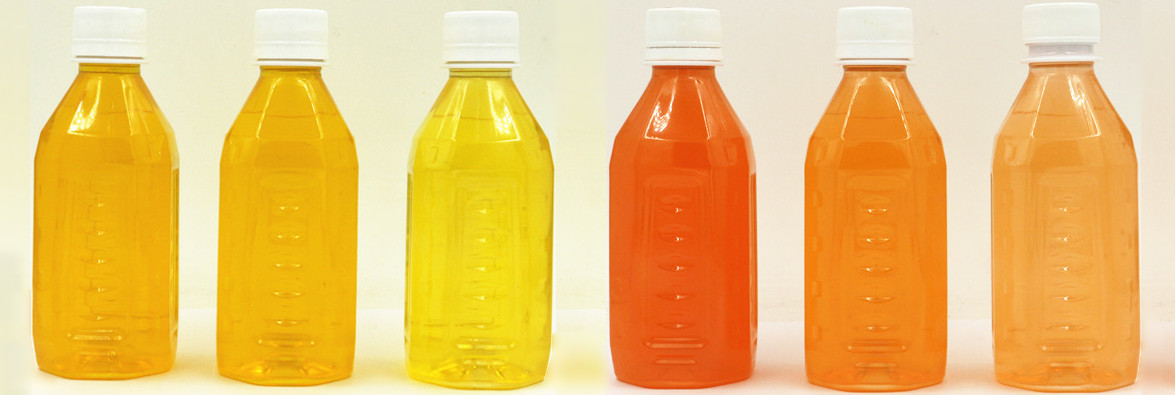Exploring Food Coloring for Drinks and Beta Carotene as a Natural Alternative
Food coloring has long been used in the food and beverage industry to enhance the visual appeal of products. From cakes to beverages, colors play an essential role in attracting consumers and adding to the overall sensory experience. In drinks, food coloring can evoke specific emotions, emphasize a brand's identity, or create a fun, engaging product for consumers. As the demand for more natural and sustainable ingredients rises, alternatives like beta carotene have become a popular choice for food coloring for drinks. This article delves into the use of food coloring in drinks, with a particular focus on beta carotene as a natural coloring agent.
The Role of Food Coloring in Drinks
Color is an important component in the appeal of beverages. The vibrant hues of fruit juices, sodas, and energy drinks not only make them look enticing but also influence the drink's perceived taste and quality. The psychology behind food coloring is significant: we associate certain colors with specific flavors (e.g., red with strawberry, yellow with lemon), and this connection can influence consumer choices. Food coloring enhances the overall drinking experience by making drinks more visually appealing and giving them a distinct identity.
In the beverage industry, synthetic food coloring has traditionally been used for its vibrant and stable hues. These artificial colorants, like Red 40, Yellow 5, and Blue 1, have been widely utilized because they are cost-effective, easy to use, and offer consistency in color across batches. However, there has been growing concern over the potential health risks associated with these synthetic additives. Some studies have linked artificial food colors to hyperactivity in children, allergic reactions, and even potential carcinogenic effects, prompting many consumers to seek out more natural alternatives.
Beta Carotene: A Natural Food Coloring Agent
As the demand for healthier and cleaner ingredients grows, beta carotene has emerged as a natural alternative for food coloring, especially in drinks. Beta carotene is a type of carotenoid, a class of pigments found in various fruits and vegetables, such as carrots, sweet potatoes, and pumpkins. This pigment is responsible for the rich yellow to orange color of these foods and is also a precursor to vitamin A, which is essential for maintaining healthy vision, skin, and immune function.
The appeal of beta carotene as a natural food coloring lies not only in its vibrant orange hue but also in its health benefits. As a powerful antioxidant, beta carotene food coloring can help neutralize free radicals in the body, potentially reducing the risk of chronic diseases such as cancer and heart disease. This makes it a particularly attractive option for manufacturers and consumers who want to avoid synthetic chemicals while still achieving a visually appealing product.
Beta carotene has found its place in various drink categories, such as smoothies, fruit juices, and even alcoholic beverages like cocktails, where a vibrant orange tint is desired. Since it is naturally derived, it fits within the growing trend of clean-label products that boast fewer artificial additives. Additionally, as a fat-soluble compound, beta carotene is stable and can maintain its color over time without fading, making it a reliable option for drink manufacturers.
Advantages of Beta Carotene in Drinks
Natural and Safe: Unlike artificial colorants, beta carotene is derived from natural sources, making it an appealing option for health-conscious consumers who are increasingly aware of what goes into their food and drinks.
Health Benefits: Beyond coloring, beta carotene provides nutritional value as a precursor to vitamin A. This can offer additional health benefits for consumers, such as promoting healthy eyesight and supporting immune function.
Sustainability: Beta carotene is often sourced from renewable, plant-based sources, aligning with the increasing consumer demand for sustainable, eco-friendly ingredients.
Stable Color: Beta carotene is known for its stability, maintaining its vibrant orange color even in light and over time, which is essential for beverages that need consistent color throughout their shelf life.
Conclusion
Food coloring plays a significant role in the beverage industry by making drinks more visually appealing and enhancing consumer experiences. As more people look for natural alternatives to synthetic additives, beta carotene stands out as a promising and safe option. Its ability to impart a rich, natural orange color while offering health benefits makes it a standout choice for both manufacturers and consumers who are seeking clean-label products. As the demand for healthier, sustainable, and aesthetically pleasing beverages continues to rise, beta carotene will likely play an increasingly important role in the future of food coloring.


Comments
Post a Comment